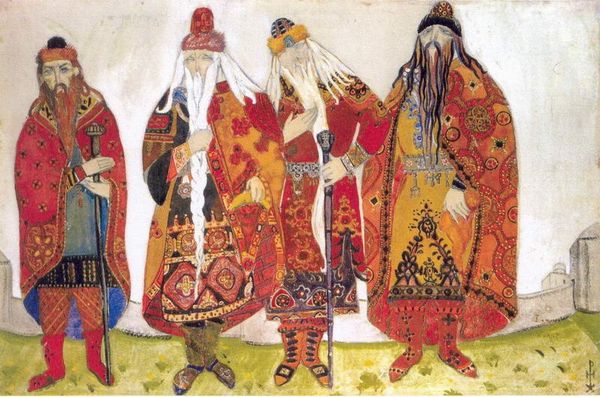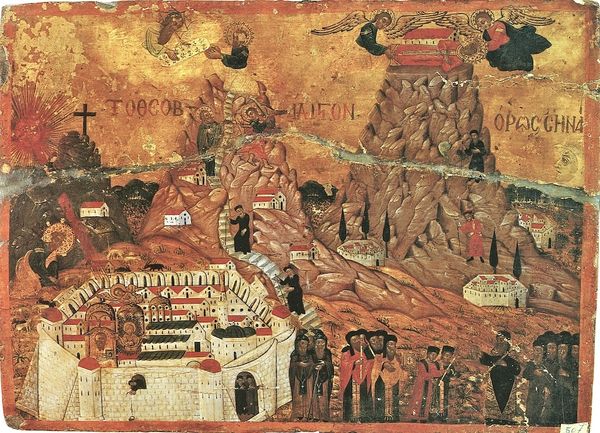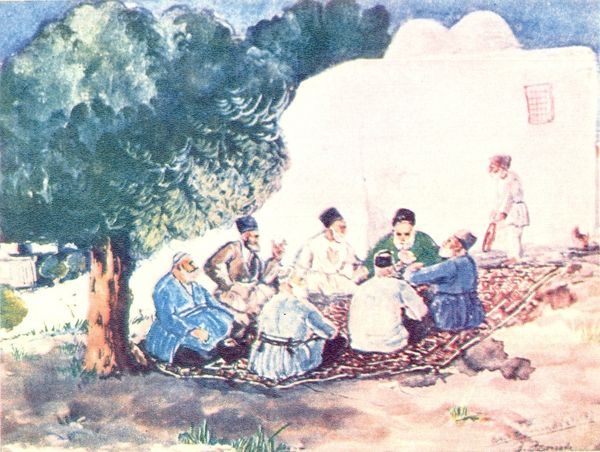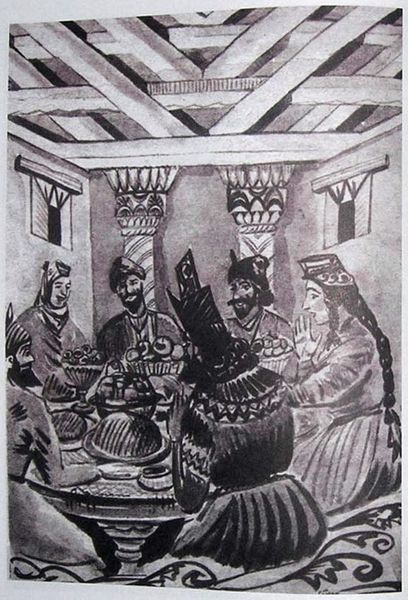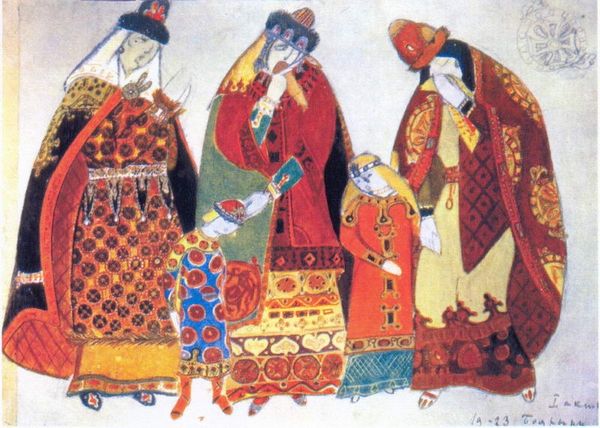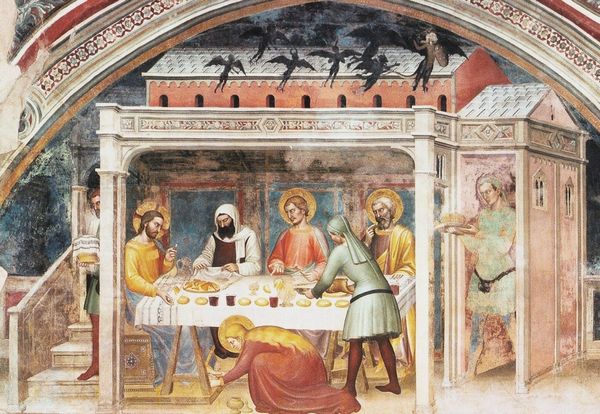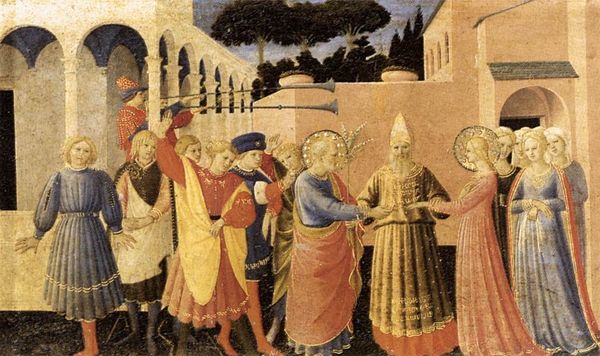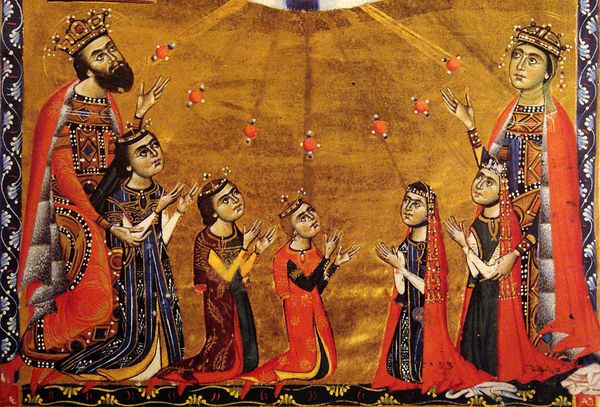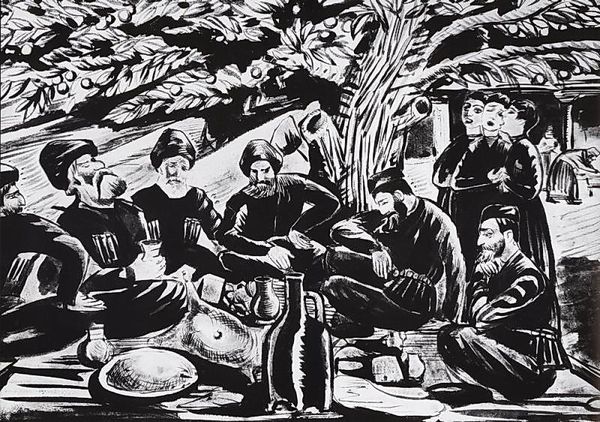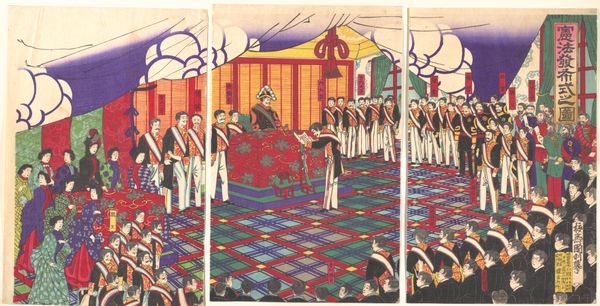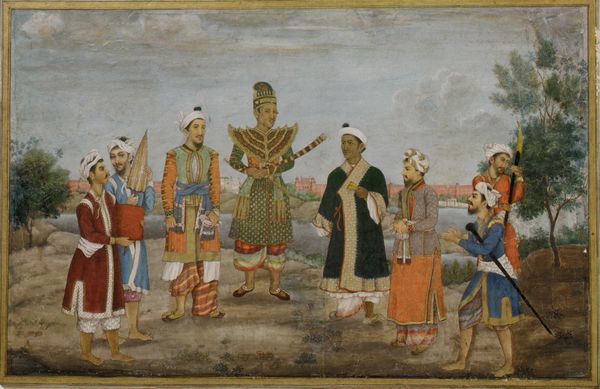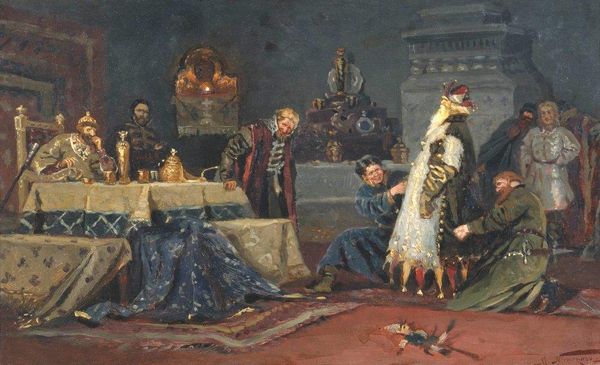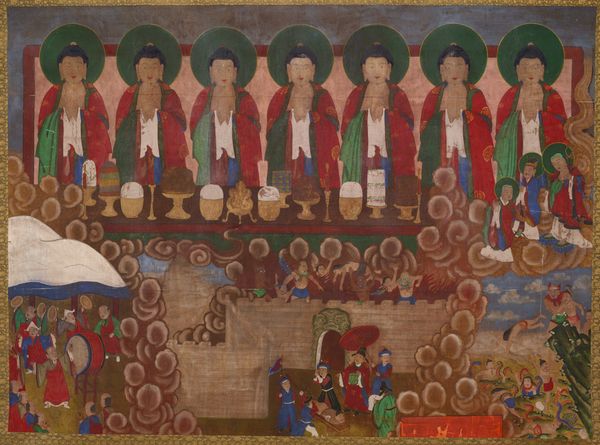
painting, oil-paint
#
portrait
#
painting
#
oil-paint
#
landscape
#
oil painting
#
folk-art
#
orientalism
#
genre-painting
#
post-impressionism
#
realism
Dimensions: 123 x 210 cm
Copyright: Public domain
Curator: This is "The Feast of Gvimradze Family" by Niko Pirosmani, painted with oil. Editor: The landscape setting feels quite celebratory. How should we understand it? Curator: Well, think about what a feast represents across cultures: community, abundance, and tradition. Now, consider that Pirosmani was a self-taught artist, a vagrant. How does his outsider status inform this idealized image of Georgian society? Editor: Interesting… It feels like he's both observing and participating, creating this folk-art celebration. But there’s almost a tension. The landscape is both inviting and kind of stark. Is that connected to his positionality? Curator: Exactly! Pirosmani captures the rituals of the elite class in Georgia. How might his artistic rendering perpetuate or challenge those structures of power and cultural heritage, considering Georgia's complex relationship with Russia? Editor: The men at the table appear serene and stately. But the servants also seem…included? Maybe. The hierarchy isn't stark. The boys standing by look noble. Curator: What does the presence of the servants, the positioning of the food, the setting—tell us about the role of labour, class, and belonging within the Georgian context he portrays? It pushes us to analyze whose stories are typically told, and who gets to tell them. Editor: I see how this is more than just a party scene. It opens a dialogue about Georgian identity, and Pirosmani's own role in documenting it. Curator: Precisely. The canvas isn't just a surface; it’s a platform for understanding the socio-political complexities of a society and an artist's place within it. It questions art history itself. Editor: I had never looked at it from this intersectional way. Thanks for unveiling that.
Comments
No comments
Be the first to comment and join the conversation on the ultimate creative platform.
